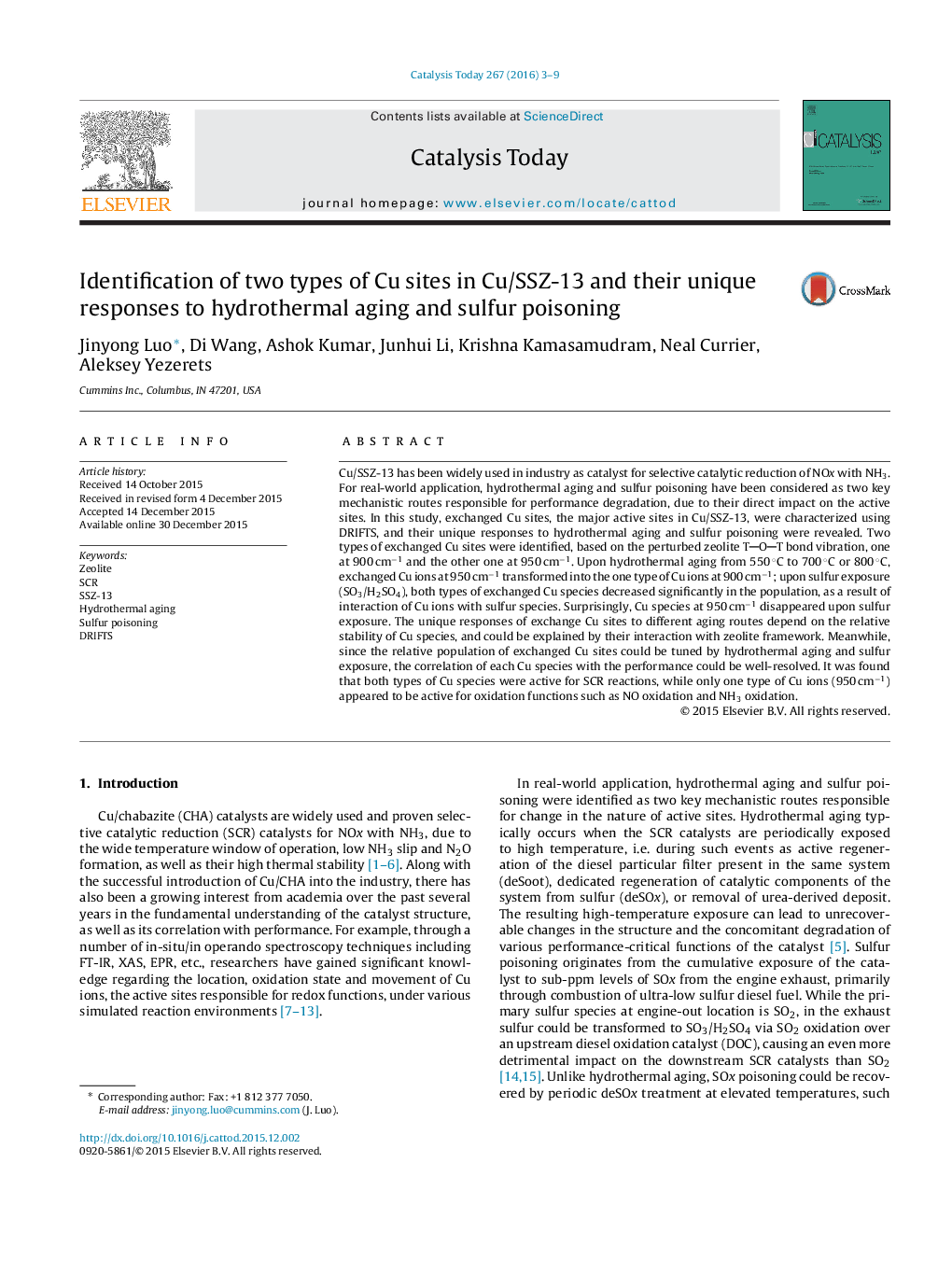| کد مقاله | کد نشریه | سال انتشار | مقاله انگلیسی | نسخه تمام متن |
|---|---|---|---|---|
| 53266 | 46961 | 2016 | 7 صفحه PDF | دانلود رایگان |

• Two types of exchanged Cu sites were identified in Cu/SSZ-13 catalyst by NH3 titration measured with DRIFTS.
• They showed unique responses to hydrothermal aging and sulfur poisoning.
• Upon hydrothermal aging, one Cu site transformed into the other type.
• Upon sulfur poisoning, one type decreased greatly, and the other disappeared.
• These two sites showed different reactivity toward SCR and oxidation function.
Cu/SSZ-13 has been widely used in industry as catalyst for selective catalytic reduction of NOx with NH3. For real-world application, hydrothermal aging and sulfur poisoning have been considered as two key mechanistic routes responsible for performance degradation, due to their direct impact on the active sites. In this study, exchanged Cu sites, the major active sites in Cu/SSZ-13, were characterized using DRIFTS, and their unique responses to hydrothermal aging and sulfur poisoning were revealed. Two types of exchanged Cu sites were identified, based on the perturbed zeolite TOT bond vibration, one at 900 cm−1 and the other one at 950 cm−1. Upon hydrothermal aging from 550 °C to 700 °C or 800 °C, exchanged Cu ions at 950 cm−1 transformed into the one type of Cu ions at 900 cm−1; upon sulfur exposure (SO3/H2SO4), both types of exchanged Cu species decreased significantly in the population, as a result of interaction of Cu ions with sulfur species. Surprisingly, Cu species at 950 cm−1 disappeared upon sulfur exposure. The unique responses of exchange Cu sites to different aging routes depend on the relative stability of Cu species, and could be explained by their interaction with zeolite framework. Meanwhile, since the relative population of exchanged Cu sites could be tuned by hydrothermal aging and sulfur exposure, the correlation of each Cu species with the performance could be well-resolved. It was found that both types of Cu species were active for SCR reactions, while only one type of Cu ions (950 cm−1) appeared to be active for oxidation functions such as NO oxidation and NH3 oxidation.
Figure optionsDownload high-quality image (97 K)Download as PowerPoint slide
Journal: Catalysis Today - Volume 267, 1 June 2016, Pages 3–9